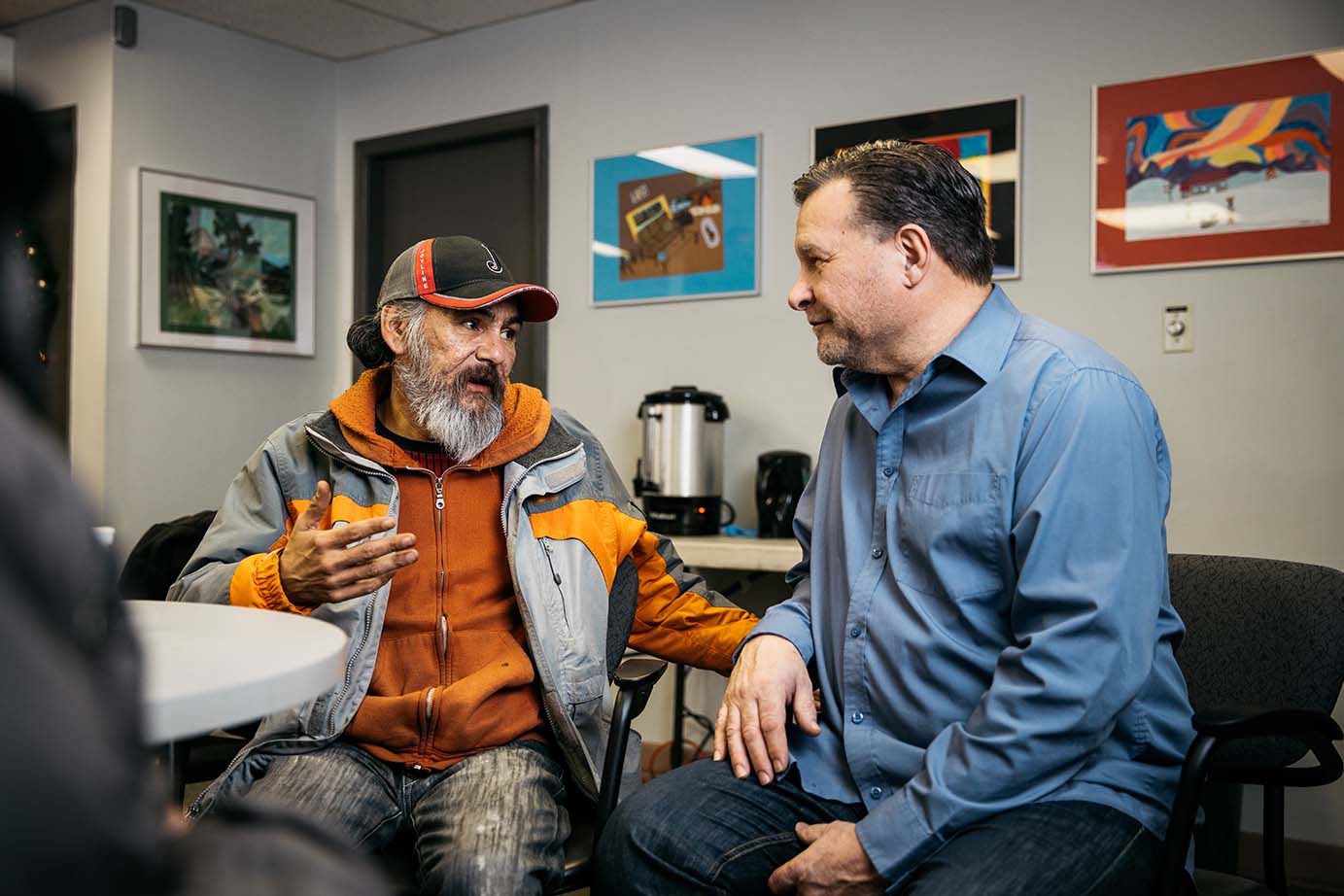
A holistic approach to community development
The Jasper Place Wellness Centre is no stranger to helping to create better futures for vulnerable populations. From providing affordable housing to creating jobs for individuals with barriers to employment, JPWC has touched the lives of thousands of Edmontonians since it was founded in 2006.
But in many ways, JPWC has only just begun.
One of the organization’s latest initiatives, the Healing House, is poised to change the way supportive housing is offered in Edmonton.
From three houses in the Glenwood neighbourhood of west Edmonton, JPWC currently operates three “Healing Houses” as part of its Bridge Healing Transitional Accommodation Program. The program provides temporary housing for people who have been discharged from the emergency departments of Edmonton hospitals, but have no other fixed address or housing to return to.
Residents are able to stay at the house for up to 30 days, or longer if they are in the process of being referred to other programs or services. While there, residents receive help from JPWC workers with things like finding and applying for income support, getting identification and securing other forms of housing or treatment, like clinical detox.
The “Healing House” model refers to the design of the building itself: the structure has a footprint which can fit on a standard single city lot, with 12 individual units in it. The units are intentionally small, forcing residents to spend time in the building’s common spaces, and in a sense, forcing them to form connections with one another.
“Research says if you can build communities of 8 to 12 adults, you’re going to have better outcomes for people, whether they’re dealing with addiction, or just needing more support,” says Taylor Soroka, co-founder of Jasper Place Wellness Centre.
There are 36 units between the three houses in Glenwood, which are almost always full.
“We are about a year and a half into our pilot project of bridge healing at these sites, and we’re always at or above capacity,” says Soroka. “We receive people 24/7. Someone could leave in the morning, the unit gets cleaned and it could be filled by evening. There’s no break.”
The high demand hasn’t phased Soroka. In fact, it has her feeling optimistic, and somewhat impassioned about the housing model she has helped to develop. The Healing House model, she explains, could be used for a variety of purposes where residents would benefit from greater community connections, including housing for seniors, veterans or those recovering from addictions.
“One third of the building is common space, so from a conventional developer’s perspective, that’s a waste of money,” explains Soroka. “But for us, it’s about our residents. Often they experience comorbidities or have physical and mental health barriers. So building that community space in, in essence, just helps set them up better for success.”
Many of the residents who end up in the bridge healing units have complex health needs and difficulties securing income or employment. Soroka says the majority of them have not accessed other housing support programs in Edmonton. Without the Healing House model, they could have continued to fall through the cracks, cycling in and out of emergency departments without getting more long-term support.
“About 70% of people who are coming through Bridge Healing have never been to other sites in Edmonton where they could be assessed for housing. So we’re serving a subset of people that are sick, and are really in need,” she says.
So far, the Bridge Healing model seems to be having a positive impact on the residents who have passed through its doors. It’s the positive outcome that SEF was hoping for when it provided construction financing for the first three buildings.
“It’s still early, and the scale isn’t there because we only have these 36 beds, but initial reports from Alberta Health Services show that people’s emergency department utilization does go down if they pass through Bridge Healing,” says Soroka.
“It does make sense, if someone has stable housing and they’re safe they might not need to turn around and go right back into the hospital again.”
Another benefit of the model, Soroka explains, is its low cost to build. Each unit costs less than $200,000 to build, putting the total cost of the building’s construction (without land) at around $2.2 million.
That affordability, she says, could be a game changer.
“If we were able to get a house and have no mortgage and just provide basic affordable housing, we could charge around $400 per month in rent. So for someone on AISH or on a pension, that’s totally doable,” says Soroka.
“If we could get these units on the market, we could actually really change the housing market in Edmonton.”
Plans are in the works to do just that. In August 2024, JPWC purchased a lot from the City of Edmonton for $1, with the intention of building two more 12-unit buildings. Thanks to grant funding from the federal Housing Accelerator Fund, the new properties will serve as a proof of concept for the Healing House model, with plans in the works to develop another 20 buildings in the years to come.
After more than ten years with the Social Enterprise Fund, we are saying goodbye to a colleague who has been at the heart of our operations for many years.
SVI Alberta is a conference held in Alberta where entrepreneurs, impact venture leaders, and changemakers gather to build their network and learn from each other through sharing experiences in a safe and supportive space.
Edmonton 3 October 2024 The Edmonton Community Foundation today announced the appointment of Ryan Young as the Director of the Social Enterprise Fund.